Arctic Oil – a white elephant?
The conference: Arctic Frontiers has attracted a record number of participants this year and huge media interest. For the first time in addition to a political and a science section, there is also a business section. It will focus on oil, gas and minerals. Clearly, once more, the Arctic is a “hot topic”.
The conference opened with an exceptionally good panel discussion tonight. The conference title is “Climate and Energy”, and it is hardly surprising that there is a lively debate on that here. Norway is, after all, an oil nation, but at the same time a country well known for innovation and wise financial management. And then, of course, comes the urgency of the climate conundrum…
Here in Tromso, Norway’s “Arctic capital”, the question of Arctic oil obviously plays a key role. The representative of the region Line Miriam Sandberg, County administrator for business, culture and health, and the panel chair Olav Orheim, (GRID Arendal, a centre that works with UNEP) made it quite clear that a lot of people here are in favour of Arctic development, including oil and gas exploration, in the interests of jobs and economic benefits.
The representative of the oil industry Kjell Giæver, Director of Petroarctic found himself a bit out on a limb, though. Apart from the Tromso representative, there was no real support for or confidence in Arctic oil development amongst the panelists. Guest of honour HSH Prince Albert II of Monaco, who is quite committed to Arctic protection and has a tradition of Arctic exploration in his family, stressed the need to protect against any dangers to the fragile environment.
The Chair of the US Arctic Research Commission Fran Ulmer called for a carbon tax and measures to protect the climate and reduce fossil fuel consumption. Although she stressed this was her personal opinion and she could not speak for ANY government (!), she is obviously in a very influential position, and anything she says on this has to be taken seriously.
It will come as no surprise that Nina Jensen, CEO of WWF Norway, is against oil exploration in the Arctic. I can remember her here at previous conferences having a much more difficult time, with plenty of opposition from other speakers. This time, my impression was that she was definitely not in a minority.
Probably the most noteworthy stance – certainly the one that impressed me most – was taken by Jens Ulltveit-Moe, the CEO of Umoe, one of the largest, privately owned companies in Norway, active amongst other things in shipping and energy. Here we had an industry representative, who said quite clearly that with the current low oil price Arctic oil was simply not viable, and this would remain the case for many years to come. (The oil industry rep as you can imagine disagreed). And by then, he said, the EU’s climate targets and the international support for a two-degree target would make fossil fuels a non-option. The future lies in renewables, he says, and Arctic oil investment will probably be a white elephant. (His group is involved in bioenergy), Now there is food for thought at the start of this high-profile gathering, which will see high-ranking government representatives from the Arctic nations, but also China and others, discuss “climate and energy”. If the opening debate is anything to go by, the next two days will be very lively.
Unlocking secrets of the polar night
During visits to Arctic research sites in summer, I have experienced first-hand the energy and inspiration that comes from around-the-clock light. Who wants to go to sleep with the sun shining at midnight and land, sea and sky awash with changing waves of blue, grey, pink and gold Arctic light?
But what happens up north during the dark winter months? It is hardly surprising that summer is the season when scientists collect most of their data. There is a huge lack of information about Arctic ecosystems during the long polar night.
This is especially the case when it comes to marine ecosystems. Experts at UiT, the Arctic University of Norway, based in Tromsö, are trying hard to make up for that. UiT is the northernmost university of the world. It says its location on the edge of the Arctic defines its mission: to research into the region, which is of increasing global importance. That includes the impacts of climate change, the exploitation of Arctic resources and environmental threats. And that doesn’t stop with the onset of winter.
Investigating polar nightlife
Polar Night Biology is one of UiT’s special research focuses. Until recently, the prevailing view was that the polar night was devoid of biological activity. But this was based on a lack of data and research, say the Tromsö experts. Extreme conditions, with darkness, cold and widespread ice make access much harder and riskier in winter. Some newer research expeditions into the polar night have produced results which challenge our understanding of Arctic marine organisms and ecosystems, say Stig Falk-Petersen, Professor of Arctic and Marine Biology at UiT, and his colleagues. There is plenty of biological activity in the far north of the planet all the year round. We need to understand how the Arctic ecosystem functions in winter if we are to understand the impacts of climate change on it. “Polar-night ecology of Arctic marine systems is a new area of research with the potential for radically altering our fundamental perception of the current state of the Arctic marine ecosystem, mechanisms governing ecosystems processes, and how climate change in the region will affect ecosystem structure and function”, says the UiT website.
So how are warmer air and ocean temperatures and the decline of Arctic sea ice affecting organisms that normally live under it, or are dependent on it in some way or other, at this time of year? And what impact will that have on the whole food web in which they play a role?
Next week, Falk-Petersen will be heading a scientific boat expedition into the Arctic waters off northern Svalbard. Ahead of this year’s annual Arctic Frontiers conference in Tromsö, I have been invited to join him and his researchers, as they try to find out more about Arctic marine organisms and ecosystems during the polar night.
I hope you’ll join us too, here on the Ice Blog for daily updates. Watch this space! We will be sailing on the university’s research vessel, the RV Helmer Hanssen. It’s currently heading across from Tromsö to Spitsbergen, where we’ll be joining the crew. You can track the ship’s progress here.
Arctic investment: still a hot prospect?
As I mentioned in the last post, I talked to various people about the current state of interest in the Arctic, in connection with the ArcticNet conference on “Arctic Change” in Ottawa last week. I would like to share some of the insights I gained with you here on the Ice Blog. With a lot of concerned people still suffering from a kind of mental hangover after the two weeks of UN climate negotiations in Lima, let me also direct you to a commentary I wrote for DW: Lima: a disappointment, but not a surprise. If you expected any action at the meeting which might help stop the Arctic warming, you will have been highly disappointed. If, like me, you think the transition to renewables and emissions reductions we need have to happen outside of and alongside that process, all day and every day, your expectations will not have been so high.
But back to the Arctic itself. With Canada coming to the end of its spell at the helm of the Arctic Council and preparing to hand over the rotating presidency to the USA at the end of the year, the annual conference organized by the research network ArcticNet was bound to attract a lot of interest. More than 1200 leading international Arctic researchers, indigenous leaders, policy makers, NGOs and business people attended the Ottawa gathering to discuss the pressing issues facing the warming Arctic.
Hugues Lantuit from Germany’s Alfred Wegener Institute is a member of the steering committee. He’s an expert on permafrost and coastal erosion. He told me in an interview that the region had to prepare for greater impacts ,with the latest IPCC report projecting the Arctic would continue to warm at a rate faster than any place on earth. While the retreat of sea ice allows easier access for shipping and more scope for commercial activities, Lantuit is concerned about the thawing of permafrost, a key topic at the Ottawa gathering:
“An extensive part of the circumpolar north is covered with permafrost, and it’s currently warming at a fast pace. A lot of cities are built on permafrost, and the layer that is thawing in the summer is expanding and getting deeper and deeper, which threatens infrastructure.”
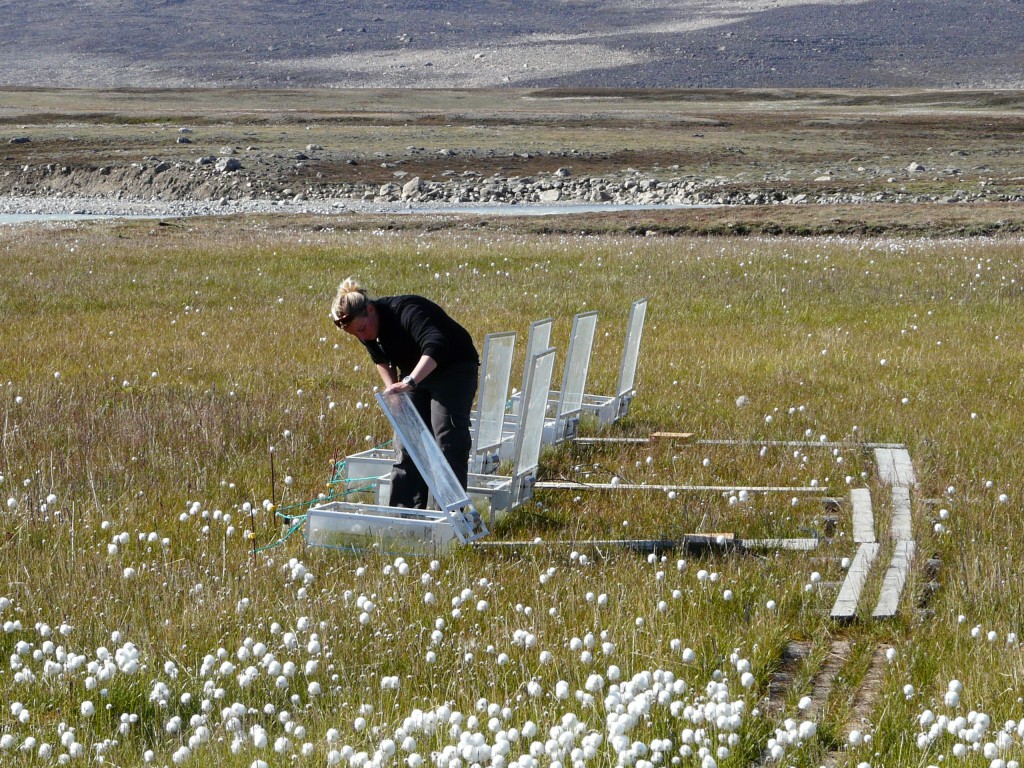
Scientists at measuring stations like the one I viisted at Zackenberg, Greenland, measure the amount of greenhouse gases emitted by melting permafrost. (I.Quaile)
Northern communities worried
Residents of northern communities are concerned about the impact of melting permafrost on railways, landing strips and buildings. Lantuit and his colleagues have created an integrated data base for permafrost temperature, with support from the EU. At the Ottawa meeting, he and his colleagues worked on identifying priorities for research, taking into account the needs of communities and stakeholders in the Arctic.
Another key issue on the Ottawa agenda was coastal erosion. Sea ice acts as a protective barrier to the coast, preventing waves from battering the shore and speeding up the thaw of permafrost. With decreasing sea ice in the summer, scientists expect more storms will impact on the coasts of the Arctic. “In some locations, especially in Alaska, we see much greater erosion than there was before”, says Lantuit. This creates a lot of issues: “There is oil and gas infrastructure on the coast, villages, people, also freshwater habitats for migrating caribou, so the coast has a tremendous social and ecological value in the Arctic, and coastal erosion is obviously a threat to settlements and to the features of this social and economical presence in the Arctic.”
Bad news for furred and feathered friends
Amongst the participants at the conference was George Divoky, an ornithologist who has spent every summer of the past 45 years on Cooper Island, off the coast of Barrow, in Arctic Alaska. Divoky monitors a colony of black guillemots that nest on the island in summer. His bird-watching project turned into a climate change observation project as he witnessed major changes in the last four decades:
“Warming first aided the guillemots (1970s and 1980) as the summer snow-free period increased. The size of the breeding colony increased during the initial stages of warming. Continued warming (1990s to present) caused the sea ice to rapidly retreat in July and August when guillemots are feeding nestlings, and the loss of ice reduced the amount and quality of prey resulting in widespread starvation of nestlings.”
The 2014 breeding season on Cooper Island had the lowest number of breeding pairs of Black Guillemots on the island in the last 20 years, Divoky says. Reduced sea ice is increasingly forcing polar bears to seek refuge on the island, eating large numbers of nestlings. Polar bears were rare visitors to the island until 2002.
The Arctic and the global climate
Divoky went to Ottawa to fit his research and experience into the wider context of climate impacts in the Arctic. Researching climate change and its effects are important but of little practical use if the research does not inform government officials and result in policies that address the causes of climate change, Divoky argues.
I asked Hugues Lantuit whether he thought the UN climate conference in Peru could achieve anything that would halt the warming of the Arctic. He said reducing emissions and reducing temperature were the only way to reduce the thaw of permafrost. But he is quite clear about the fact that there is no mitigation strategy in terms of permafrost directly. “You would have to put a blanket over the entire permafrost in the northern hemisphere. This is not possible.”
At the same time, he stressed the key role of the Arctic with regard to the whole world climate: “Permafrost contains a lot of what we call organic carbon, and that is stored in the upper part. And if that warms, the carbon is made available to microorganisms that convert it back to carbon dioxide and methane. And we estimate right now that there is twice as much organic carbon in permafrost as there is in the atmosphere”.
So far, the international community has not been able to take measures to break that vicious circle.
What happened to the Arctic gold rush?
Communities who live and companies that work in the Arctic have to focus on adaptation to the rapid change, says Lantuit. In his eyes, economic activity is increasing, posing new challenges for infrastructure and the environment.
Malte Humpert, the Executive Director of the Arctic Institute, a non-profit think tank based in Washington DC has a different view on the matter. He says while attendance at Arctic conferences and interest in the Arctic is still high, commercial activity has actually been cooling off. “We are seeing a slow-down of investment. Up to this point there has been a lot of studying, a lot of interest being voiced, with representatives from China or South Korea, Japan, Singapore or other actors, arriving at conferences, speaking about grand plans. But up to this point a lot of the talk has been just that.” A lot of activity has been put on hold, says Humpert. He says the “gold rush mentality we saw a few years ago” has weakened. “There was a lot of talk about Arctic shipping initially, then we had oil and gas activity in 2012, north of Alaska, then we had the discussion about minerals in Greenland. The question is now, with the oil price being down below 70$ a barrel, some political uncertainties over the Ukraine, involving the EU and Russia, how will that affect Arctic development?”
Humpert stresses the Arctic does not exist in a vacuum, but has to be seen within the global context. Sanctions on Russia because of the Ukraine crisis have created economic problems for Moscow and limited access to technology it might need for its Arctic activities. “Maybe Arctic development has been oversold and overplayed and will be more of a niche operators’ investment. One could definitely question if there will be this global push into the Arctic.”
Arctic development on ice
Humpert is skeptical that any major development will take place before 2030. He says developing the infrastructure in terms of ports and communications in the remote Arctic region would require billions of dollars of investment, and would have to be a very long-term proposition. It will also depend to a large extent on exactly how climate change affects ice conditions in the Arctic. Climate change can make the climatic conditions in the Arctic more variable. This means that for a temporary period, there might even be more ice, which would block transport routes.
The Arctic Institute says there has actually been a slow down this year in terms of navigation on the northern sea route (NSR) in particular: “The season just closed about a week ago. Last year we had 1.35 million tonnes of cargo being transported along the NSR, this year we had less than 700,000 tonnes, so an almost 50% decrease, just because there was more ice in the way”, says Humpert.
Whether slower development is good news or bad depends on your perspective. The lull in Arctic activity could pre-empt environmental degradation or destruction, says Humpert, and leave scope to consider development of the Arctic in what he calls a 21st century way. Instead of “old-school” thinking about extracting minerals, oil and gas and increasing shipping, there could be a focus on bringing modern, high-speed communications, fiber optics and thinking about renewables, such as wave energy. This would benefit the small populations in the Arctic, the expert argues.
But from the viewpoint of a country like Russia, he adds, where 40 percent of your exports are generated above the Arctic circle, in terms of hydrocarbon resources, the slowdown in Arctic development because of the drop in oil prices and political tensions over Ukraine is very worrying.
So while these developments seem to have brought the Arctic a breathing space, ultimately, the commercialization of the region could be just a matter of time. Ottawa conference organizer Lantuit argues that there has always been activity in the high North. The priority now, he says, must be to ensure international cooperation and additional investment in protecting the environment and maintaining safety in a region where rapid change seems to have become the status quo.
From Alaska to Ottawa
Ottawa has been the setting for “Arctic Change”, another major Arctic conference this week. It is organised by the research network ArcticNet. I was not able to attend, but have been interviewing various people for an article on DW about the meeting, and about what is happening in the Arctic at the moment. One of the people I spoke to was George Divoky, who went to the meeting to put his own work into context and get the “big picture” of how climate change is having an impact on the Arctic. George is the mainstay of Friends of Cooper Island
He has a bird research station on Cooper Island, off Barrow, Alaska. For 45 years, he has been there every summer, observing a colony of black guillemots, who breed there. As he told me when I first met him during a trip to Alaska in 2008, his ornithological observation widened out into an observation of climate change over the years, witnessing some dramatic changes. I would like to share his views with you here on the Ice Blog.
Iceblogger: Why are you attending the conference and what do you expect from it?
As someone who has spent the past 45 summers studying seabirds in the Alaskan Arctic, I am very interested in hearing the findings of arctic researchers working in other disciplines and geographic areas.
I expect to be brought up to date on the most recent findings of how warming and development is affecting the ecosystems and people of the Arctic. The information I obtain allows me to put my work (which is on a single species breeding on one island) in a much larger context.
Has the Canadian chairmanship of the Arctic Council affected Canada’s interest in the Arctic?
I know little of the international politics of the Arctic but my feeling is that Canada has always had a major interest in the Arctic because of the extent of their arctic lands and the large number of villages and settlements. With all that is now going on in the Arctic, Canada’s chairmanship certainly provides an opportunity for the country to focus on the region even more.
Are there differences in attitudes to the Arctic in the various countries involved? US; Canada, Russia, Norway…?
I feel that the US (with the exception of the indigenous people who live there) tends to treat its small part of the Arctic as a place to exploit natural resources and conduct research while Canadians have a much more organic (holistic) approach to the region. My impression is that is also true for Scandinavian countries.
What has been your experience of Arctic change on Cooper Island this year?
The 2014 breeding season on Cooper Island had the lowest number of breeding pairs of Black Guillemots in the last 20 years. Breeding success in 2014 was low as all of the younger siblings in then nests died from starvation during a major windstorm that occurred in August after ice retreat and parent birds could not find sufficient prey. We also had more polar bears on the island and interactions with them than during the last few years. Polar bears were rare visitors to the island until 2002.
What impacts of the above-average rise in temperature have you seen over your years on Cooper island?
Warming first aided the guillemots (1970s and 1980) as the summer snow-free period increased and was better suited for the 90 days it takes guillemots to breed. The size of the breeding colony increased during the initial stages of warming. Continued warming (1990s to present) caused the sea ice to rapidly retreat in July and August when guillemots are feeding nestlings and the loss of ice reduced the amount and quality of prey resulting in widespread starvation of nestlings. Reduced sea ice also forced polar bears to seek refuge on the island with large numbers of nestlings being eaten by bears.
How serious is the problem of thawing permafrost?
Thawing of permafrost has the potential to drastically change terrestrial ecosystems due to changes in drainage and plant communities. The large shorebird and waterfowl populations breeding on the tundra require large areas of ponds and lakes for breeding. Melting permafrost is allowing water to drain from the surface decreasing the extent of aquatic habitats while increasing the depth for root growth which facilitates shrubs replacing tundra plants.
Do you have a sense that there is a “rush for the Arctic’s resources” or is this just media hype?
It is clear to me that there is a rapidly increasing interest in arctic resources from government and industry.
Where should the priorities of Arctic research and Arctic policy be in coming years?
While there will certainly be increased research in the Arctic in coming years I think it is important to realize that just because humans know more about a region or ecosystem it does not necessarily follow that they will be any better at protecting it from impacts – or likely to do so. Pre-development ecological research is something most governments feel they must do to satisfy concerns about environmental degradation, but the ways in which that research can limit the effects of the post-development degradation – or assist in mitigating that degradation – is unclear. Similarly, researching climate change and its effects are important but of little practical use if the research does not inform government officials and result in policies that address the causes of climate change.
With the climate conference going on in Peru – do you have the feeling the world takes the changes in the Arctic seriously?
I feel that the entire issue of current and predicted climate change is now being taken more seriously and, as a result, there is more focus on what is occurring in the Arctic since people and government now see the changes in the Arctic as being less removed from their own experience.
Are you optimistic about the future of the Arctic?
I am not optimistic that what used to be considered the “Arctic” will persist into the future. The Arctic where I do research now bears little resemblance to the Arctic I first went to in 1970. With models showing summer sea ice may soon disappear and predictions for increasing temperatures and development, it is likely that current and future generations of researchers will also be taken aback with the pace of change during their time in the region. Clearly, the Arctic as a geographic region will persist but the characteristics that are evoked by the word “arctic” (i.e. snow and ice dominated landscapes far from human industrial development) will no longer apply to the region. And, of course, the biota adapted to the arctic ecosystems of the past will have very uncertain futures given the pace of change.
What will it look like in 20, 30, 50 years?
Much of the Arctic became technically subarctic during the last 20 years. At least for the near future, winters will always be cold in the Arctic so some seasonal snow and ice cover will be present but the annual period when snow and ice are present will decrease. The rate at which these changes will take place is unclear as an Arctic that is ice free in summer (and losing land ice in Greenland) might cause more rapid changes.
Can anything happen to save it?
I was very lucky to be able to be in the Arctic in the late 20th Century but it now seems clear that with the projected increases in atmospheric CO2 and resulting increases in temperatures and ocean acidifcation that the Arctic (as well as many of the earth’s natural areas) could be unrecognizable by the middle of the 21st Century.
Thick Antarctic ice not sign of cooling
The recent publication of a study on Arctic ice as measured by the “yellow submarine”, an underwater robot, caused a flurry of comments on the “climate hoax” by some of those of a “climate-sceptical” persuasion. I contacted a sea ice physicist at Germany’s AWI Institute for an independent opinion. Here’s the background:
Measurements conducted by an underwater robot have found that Antarctic sea ice is much thicker than previously thought in some places. Much of this floating sea ice is underwater, hidden from the satellites which have been tracking seasonal sea ice for decades. The satellite data is normally validated by drilling into ice floes which can be reached by ship, or visual estimates from the ships themselves. However, it is difficult to reach the thickest ice that way.
Underwater robot below the ice
Over the last four years, an international group of researchers has been mapping the bottom of sea ice in several areas of the Antarctic using an underwater robot, or AUV. It can swim to a depth of some 30 metres (100 feet) and uses sonar directed upwards to survey the bottom of the sea ice. This gave them access to areas where measurements could not be carried out until now.
The study, published in the journal Nature Geoscience, suggests that the average ice thickness could be considerably higher than previous estimates. In three regions surveyed, the robot sub found that deformed, thickened ice accounted for at least half of and as much as 76 percent of the total ice volume, the researchers say.
Climate skepticism vindicated?
While Antarctica’s ice sheet, that is the land ice, is melting and retreating, the extent of the sea ice has been expanding over the last three winters. This has led some who are skeptical about climate change to suggest that it could be evidence that human-made global warming is not happening. But sea-ice physicist Stefan Hendricks, from the Alfred-Wegener Institute for Polar and Marine Research, based in Bremerhaven, Germany, told me in an interview the new measurements were no reason to doubt climate change is happening.
“What our colleagues have shown is that ship-based measurements do not record this really thick ice. That is no surprise to us. It is good that they have found this out, but basically it just tells us that we have to be cautious when it comes to using ship-based data”, Hendricks said.
The sea ice extent in the Antarctic has been growing, while the sea ice in the Arctic, at the northern end of the planet, has decreased dramatically in recent years. Hendricks stresses that the two regions are completely different:
“The Arctic Ocean is surrounded by land, whereas in the Antarctic, the land is in the middle. If the Arctic were not surrounded by land, the ice cover would also be much bigger in winter”, says Hendricks. The increase in Antarctic sea ice in winter can be partly explained by the wind direction, he adds . Ice grows faster, the thinner it is. If it is blown out from shore, for instance into the Indian Ocean, new ice is created very quickly, according to the ice expert. He also warns against comparing what happens to the Arctic in summer to what happens at the southern end of the planet in winter:
“If you look at the cycle over the whole year, your will see that the sea ice in the Antarctic also melts almost completely in summer”.
Valuable data, limited application
Still, the German expert says the new ice measurements from the Antarctic are of major importance to our understanding of how sea ice behaves. But he stresses that the ice floes are on the move all the time. Although the measurements are very exact, the situation is constantly changing ,and the measurements could only be taken at a limited number of spots in what is a huge area of ice.
“The question is how representative is this for the total ice extent? This depends to a very large extent on which ice floe you take. There are large differences between them. The differences are particularly marked if you go further away from land. Close to land, the ice piles up and is deformed and so you get this very thick ice. Further out, you don’t get that”.
The new measurements certainly do not give any reason to be more relaxed about climate warming, says Hendricks. Increased sea ice could have a cooling effect, as ice reflects heat back into space, whereas the sea water absorbs the heat, exacerbating warming. But given that the ice melts again in summer, that effect would be very slight, says the physicist.



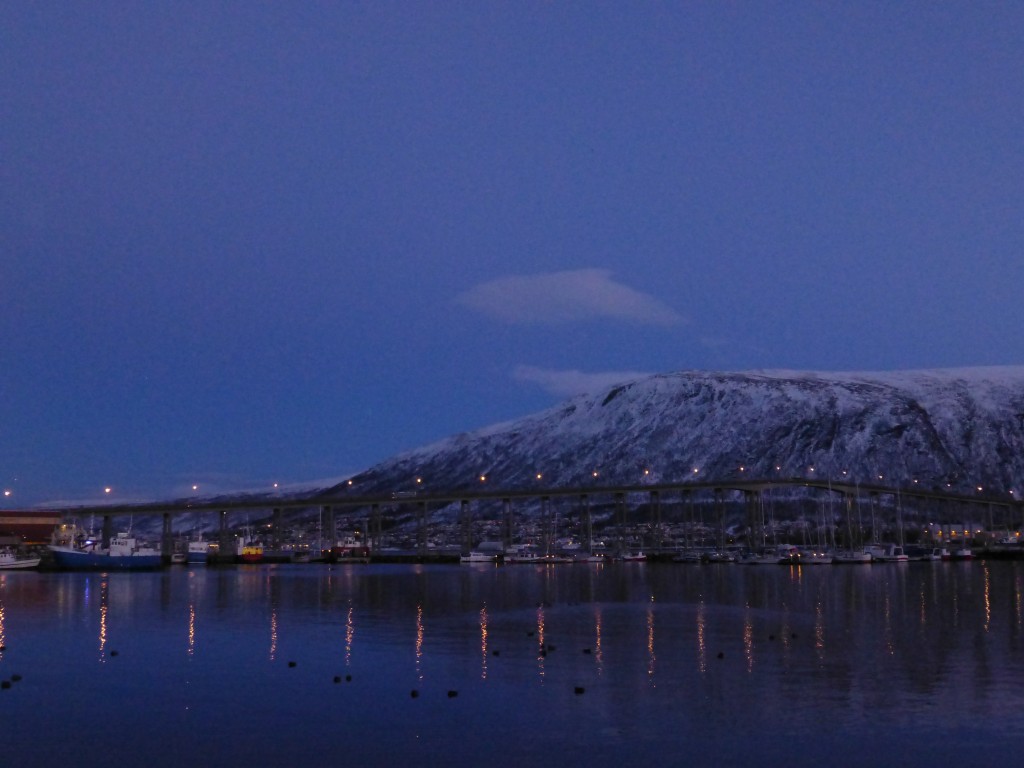
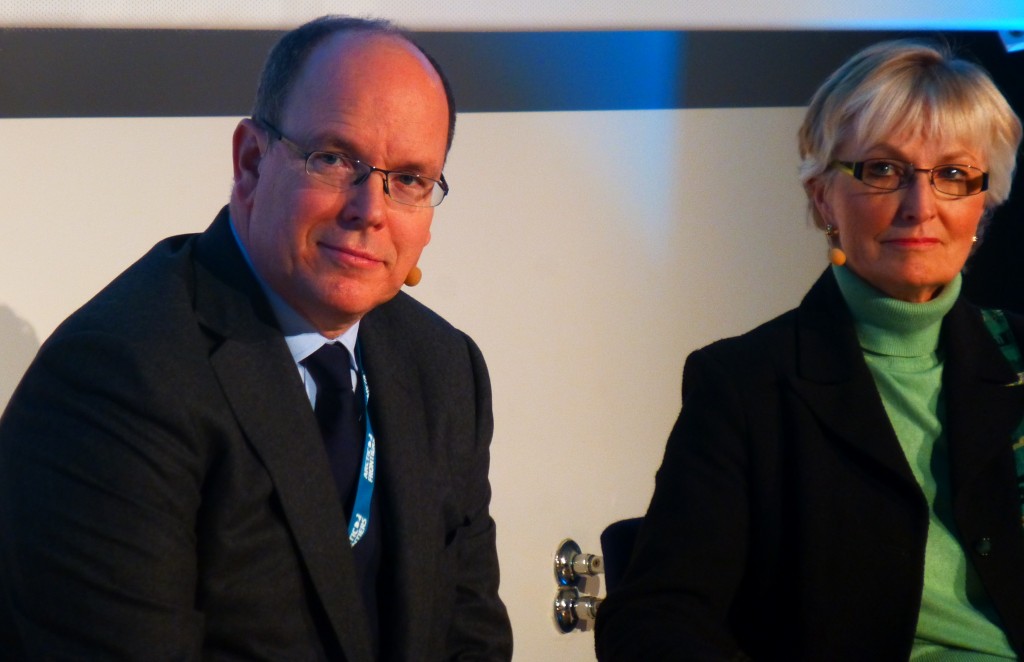
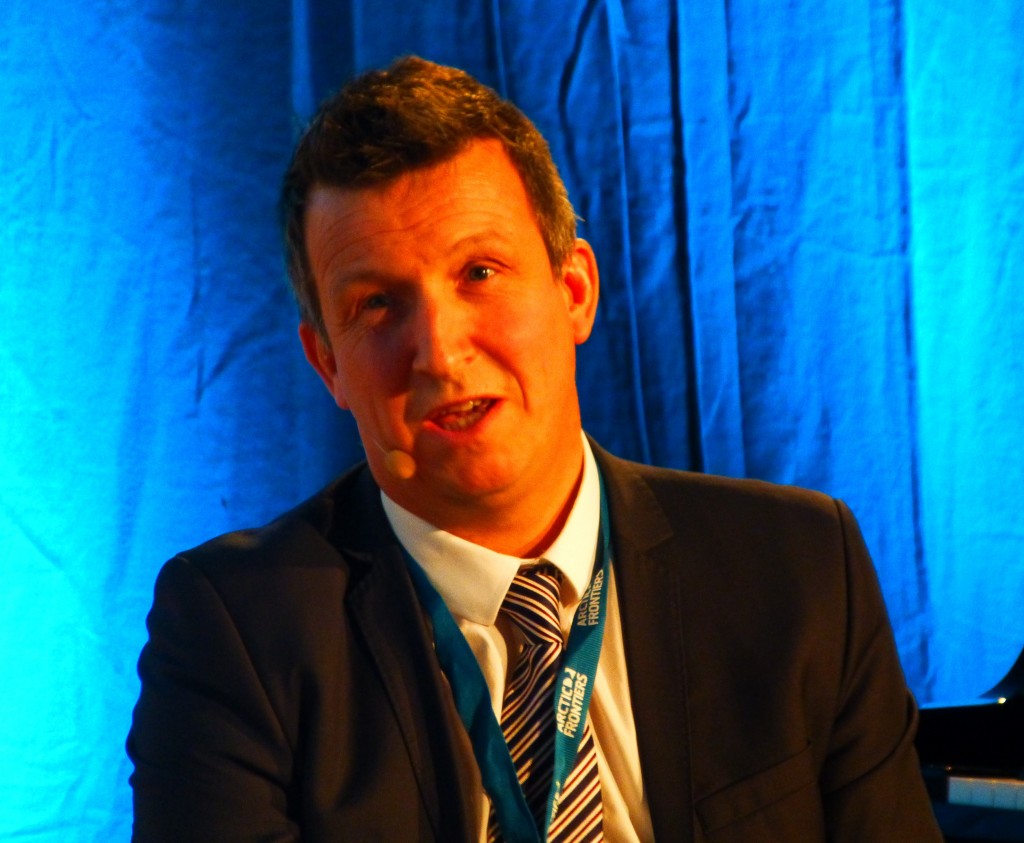
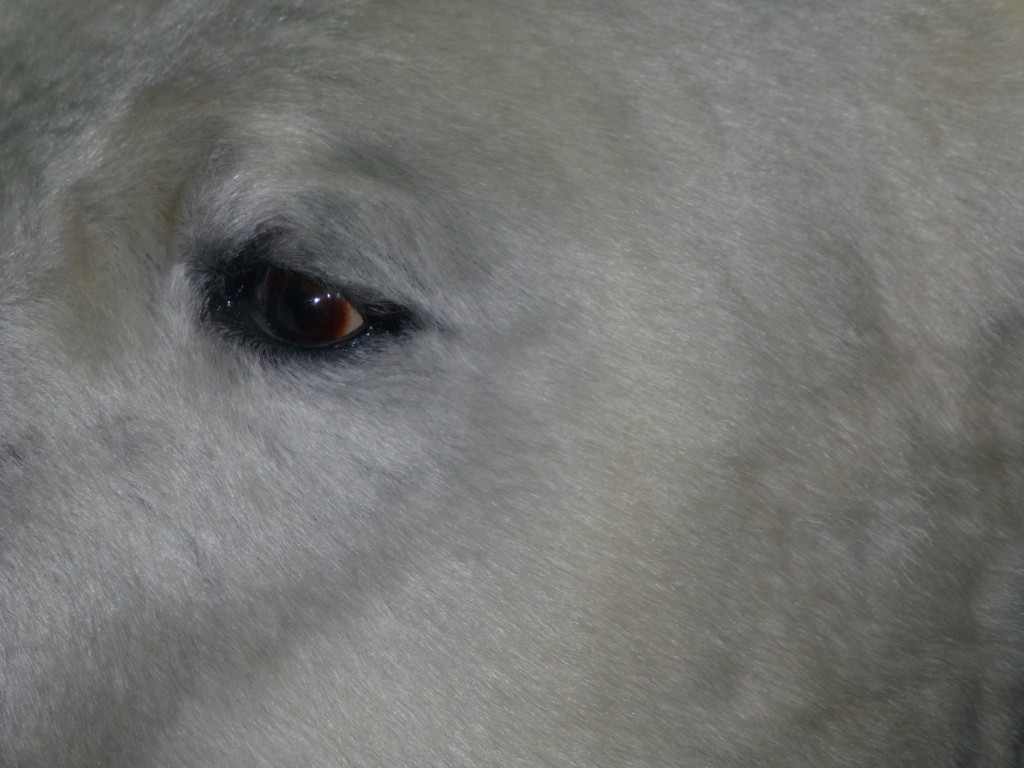


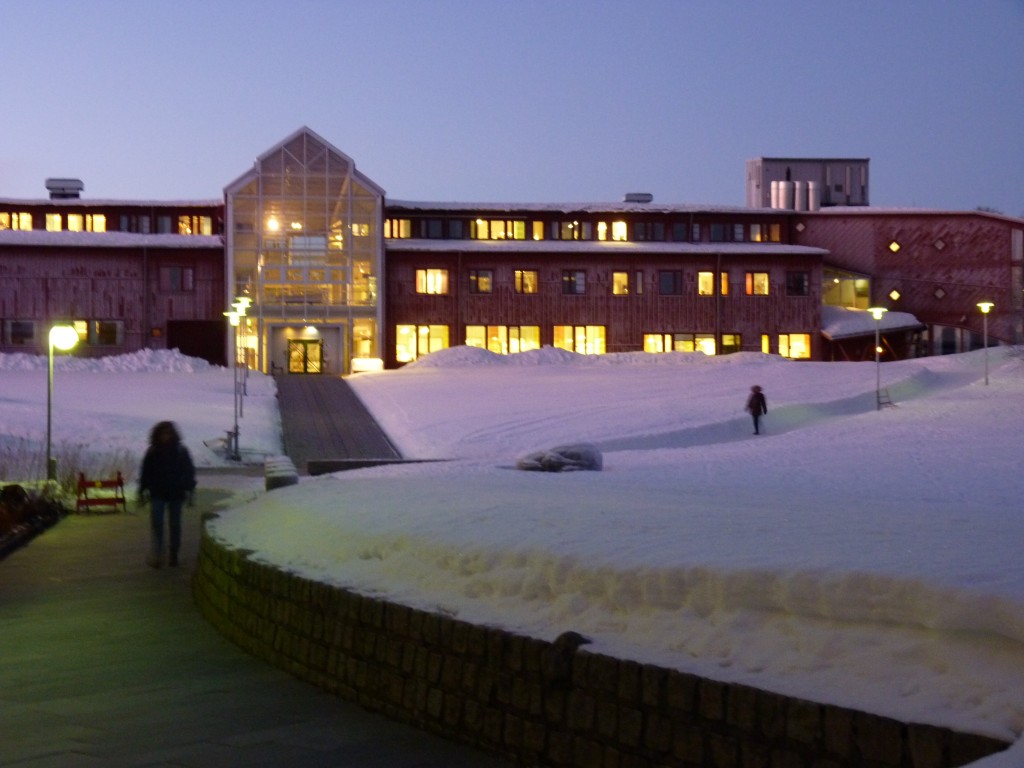

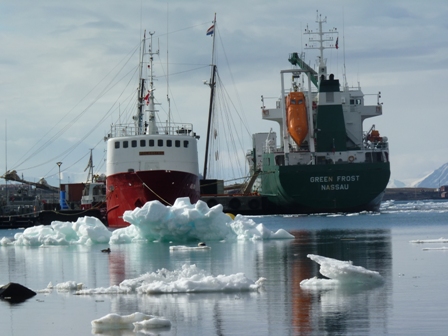

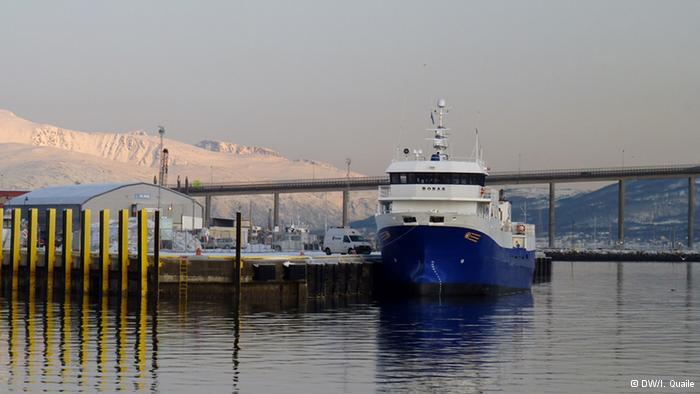
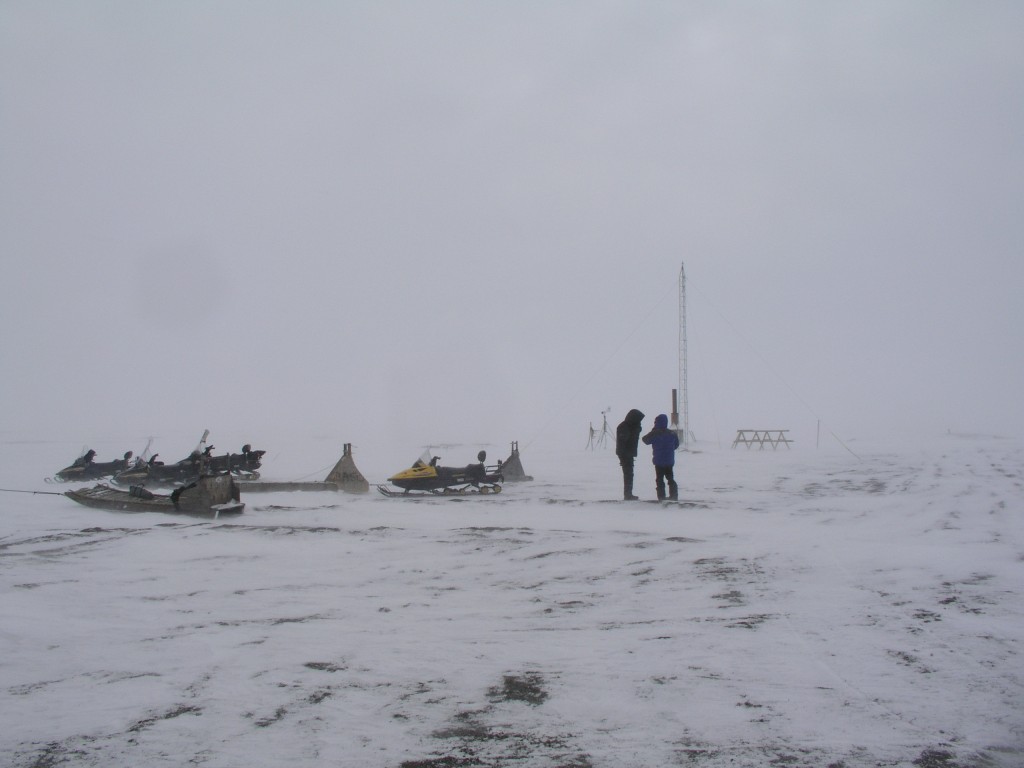
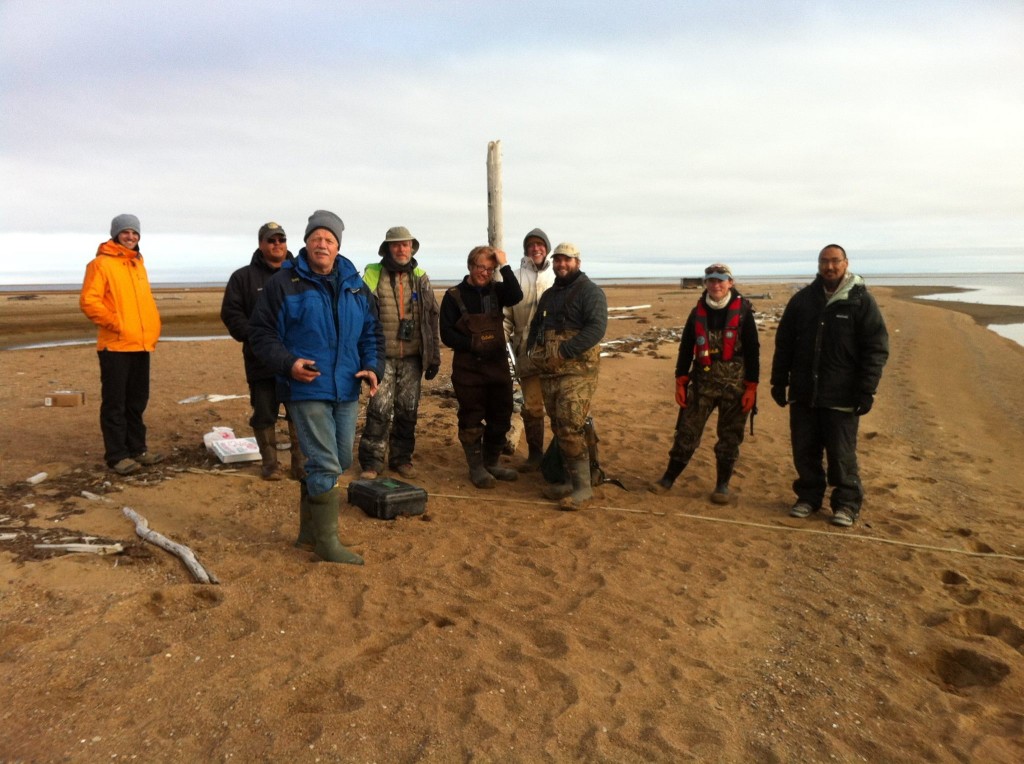
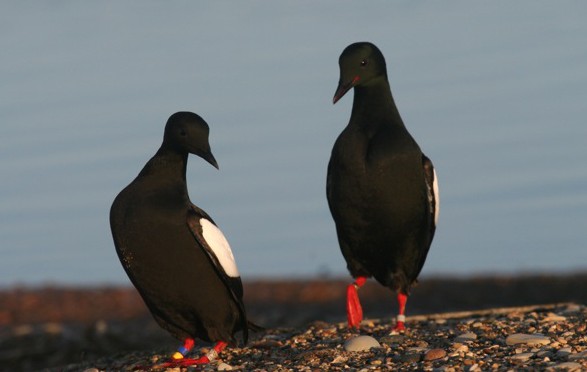
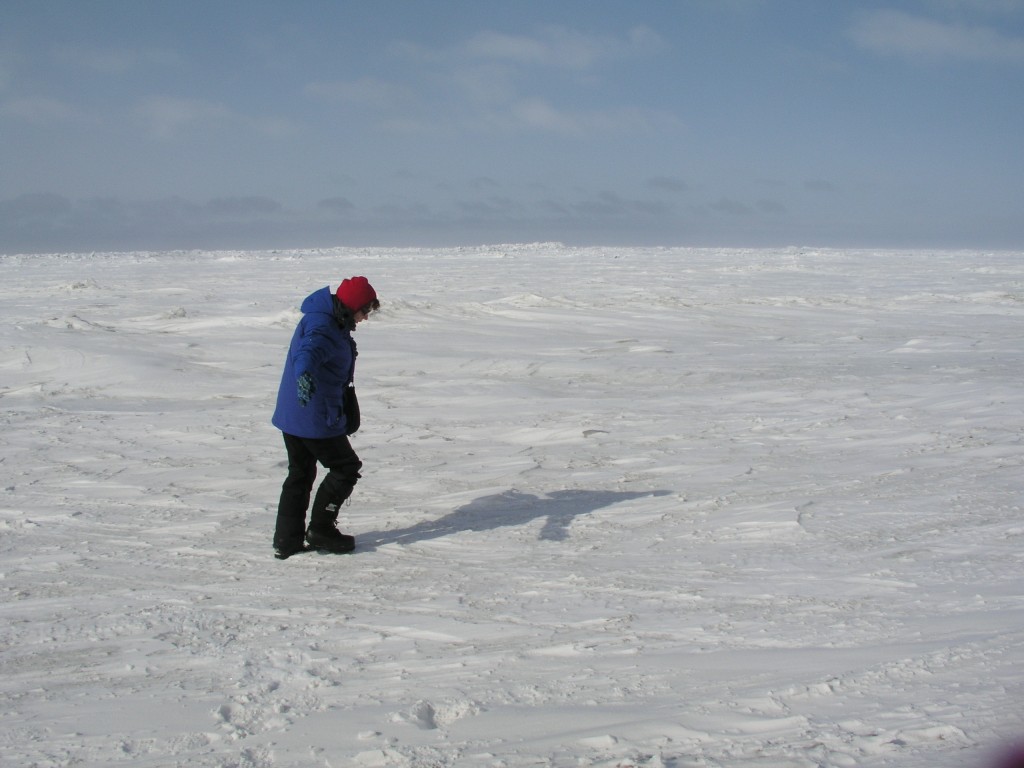
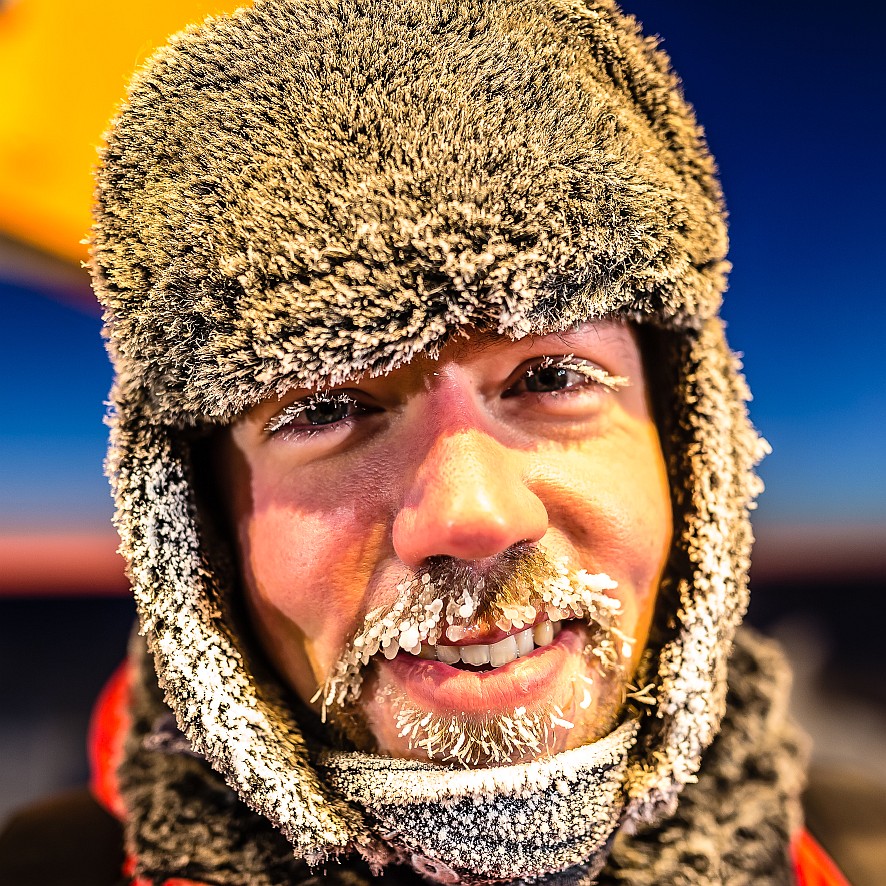
















Feedback